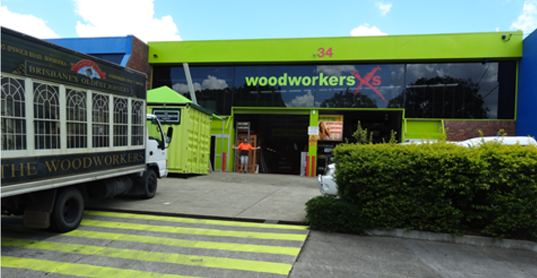Timber FAQ
DOES TIMBER HAVE TO BE FINISHED?
By ‘finishing’ we mean the application of either an opaque or transparent finish applied to all 6 sides to protect it from the elements. Without a finish all timber will swell or crack and will discolour. No warranty applies to unfinished joinery.
To preserve your warranty as well as your joinery, a full coat of sealer must be applied to dry timber joinery within 48 hours of delivery. Generally timber joinery will require at least 4 coats of finish, two coats of primer/sealer or undercoat and two top coats to give luster and long-lasting protection. All joinery should be checked regularly, but the life of the finish will depend on its exposure. Joinery fully exposed to weather and sunlight or joinery in coastal areas will need more frequent maintenance. Look for signs of dryness, peeling, surface checking or discolouration.
IS CEDAR MORE DIFFICULT TO FINISH THAN OTHER TIMBERS?
WHAT OTHER TIMBERS ARE AVAILABLE AND HOW DO THEY FINISH?
ROSEWOOD: Woodworkers fabricates joinery in New Guinea Rosewood but does not carry a stock range in this timber. Rosewood is one of the world’s most stable & durable timbers, but has the disadvantage of large colour variations within each component. For this reason it needs to be lightly stained rather than clear finished.
KWILA/MERBAU: Woodworkers uses Class 1 hardwoods for its sills on assembled frames, usually in Kwila or Merbau. These sills can leach a dark stain onto their surrounds unless they are fully sealed on all sides to contain their natural tannins. It is essential that the underside and all faces of sills are fully sealed with compatible product to that used on the joinery before installation.
WHAT TRANSPARENT FINISHES ARE RECOMMENDED?
Long life in exposed conditions & easily maintained.
Easy to apply and easily re-applied over time.
Easily removable from glass.
Can be used internally & externally.
Nourishes the timber & prolongs its life.
There are 2 products in the coating system – SIKKENS CETOL HLS (sealer) and SIKKENS FILTER 7 (top coat) available in a range of tints as well as the honey clear 077 transparent finish.
HOW DO I GET A SHOWROOM FINISH ON MY JOINERY?
Repeat the sealing and sanding process until a smooth even finish is achieved.
It is important that all smoothing and preparation be done at the priming/sealing stage as you should not need to sand the top coats. SIKKENS FILTER 7 (with UV filters for added protection) is recommended for the top coats as it builds quickly to a rich satin finish.
WHAT IF I PAINT THE JOINERY WHITE OR WITH A COLOUR?
WHAT IF MY PAINTER WANTS TO USE DIFFERENT PRODUCTS?
Polyurethane coatings, estapols and lacquers – All such finishes are too inflexible and restrain natural timber movement. They therefore crack quickly and because they retain and concentrate heat, can cause severe warping or splitting in the joinery. They also break down quickly in ultraviolet light. These finishes void your joinery warranty if used externally.
Acrylic coatings – Have the effect of wrapping your joinery ‘in plastic’ so that it cannot breathe. Coatings tend to ‘stick’ and restrict movement where, for example, sashes have to slide across each other in windows and doors. They are generally complicated to re-apply over time requiring etching and other surface keying to permit subsequent coats to bond. These finishes void your joinery warranty if used externally.
Varnishes and Natural oil finishes – Marine varnishes do not have a long life & most modern varieties have similar disadvantages to lacquers. Natural oil finishes are good for the timber but tend to be absorbed over a fairly short time so that regular recoating is required.
Water repellant preservatives – Contain repellant waxes, resins and usually fungicide to provide a temporary water barrier which breaks down progressively due to atmospheric oxidization. Can cause compatibility and bonding problems with subsequent finishes and voids the joinery warranty.
OPENING HOURS
Monday - 7am–3pm
Tuesday - 7am–3pm
Wednesday - 7am–3pm
Thursday - 7am–3pm
Friday - 7am–1pm
Saturday - 8am–12.30pm
Sundays and Public Holidays Closed
Our Team

Our Store

